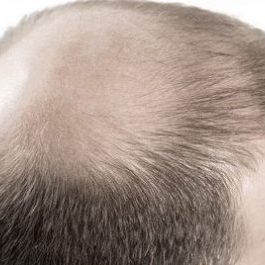Male & Female Pattern Hair Loss

Male & Female Pattern Hair Loss
The biggest cause of hair loss among women
The causes are highly individualistic but are most commonly attributed to a combination of stress, hormonal imbalance, nutritional deficiencies and cosmetics (allergies/harsh treatments).
Hair loss shampoos and scalp treatments
Depending on the cause of hair loss, shampoos/scalp treatments have limited roles. Moreover, it is more important to maintain a healthy (cleaned, hydrated and nourished) scalp in order to avoid excessive hair loss, as part of the treatment regime. Some home cares with copper, zinc sulfate, saw palmetto may achieve certain anti-DHT properties in the scalp.
Lifestyle choices
A stressful lifestyle and/or sudden diet changes that lead to sudden, dramatic weight loss can contribute to hair loss.
Treatment of hair loss in women
Female hair loss is commonly classified through the degree of severity, cause. With early detection, many individuals recover over time with appropriate treatment.
Aggravators of hair loss in men Androgenic
Alopecia or male pattern baldness is responsible for the vast majority of hair loss in men. While there are many possible reasons people lose hair including serious diseases, reaction to certain medications and in rare cases extremely stressful events, most hair loss in men are inherited.
What male pattern baldness sufferers are actually inheriting are hair follicles with a genetic sensitivity to Dihydrotestosterone (DHT). Hair follicles that are sensitive to DHT begin to miniaturise, shortening the lifespan of each hair follicle affected. Eventually, these affected follicles stop producing cosmetically acceptable hair.
First line treatment for males
Given that the vast majority of hair loss in men is androgenic alopecia, the first line treatment aims to inhibit Type II 5-alpha-reductase, the enzyme that converts testosterone to androgen dihydrotestosterone (DHT), to arrest the hair loss process. Concurrently, scalp treatments also provide essential nutrients and an environment that promotes hair growth.
Other possible treatments
Hair transplantation is a surgical technique that moves individual hair follicles from a part of the body called the ‘donor site’ to bald or balding part of the body known as the ‘recipient site’. It is primarily used to treat male pattern baldness.
In this minimally invasive procedure, grafts containing hair follicles that are genetically resistant to balding are transplanted to the bald scalp. It can also be used to restore eyelashes, eyebrows, beard hair, chest hair, pubic hair and to fill in scars caused by accidents or surgery such as face-lifts and previous hair transplants.
Hair transplantation differs from skin grafting in that grafts contain almost all of the epidermis and dermis surrounding the hair follicle, and many tiny grafts are transplanted rather than a single strip of skin.
Since hair naturally grows in groups of 1 to 4 strands of hair, today’s most techniques harvest and transplant these naturally occurring 1 to 4 hair follicular units in their natural groupings.
Thus, hair transplantation can achieve a natural appearance by mimicking natural hair. Donor hair can be harvested in two different ways: strip harvesting, and Follicular Unit Extraction (FUE).
Recommendations:
*This treatment can only be performed by a certified doctor.




